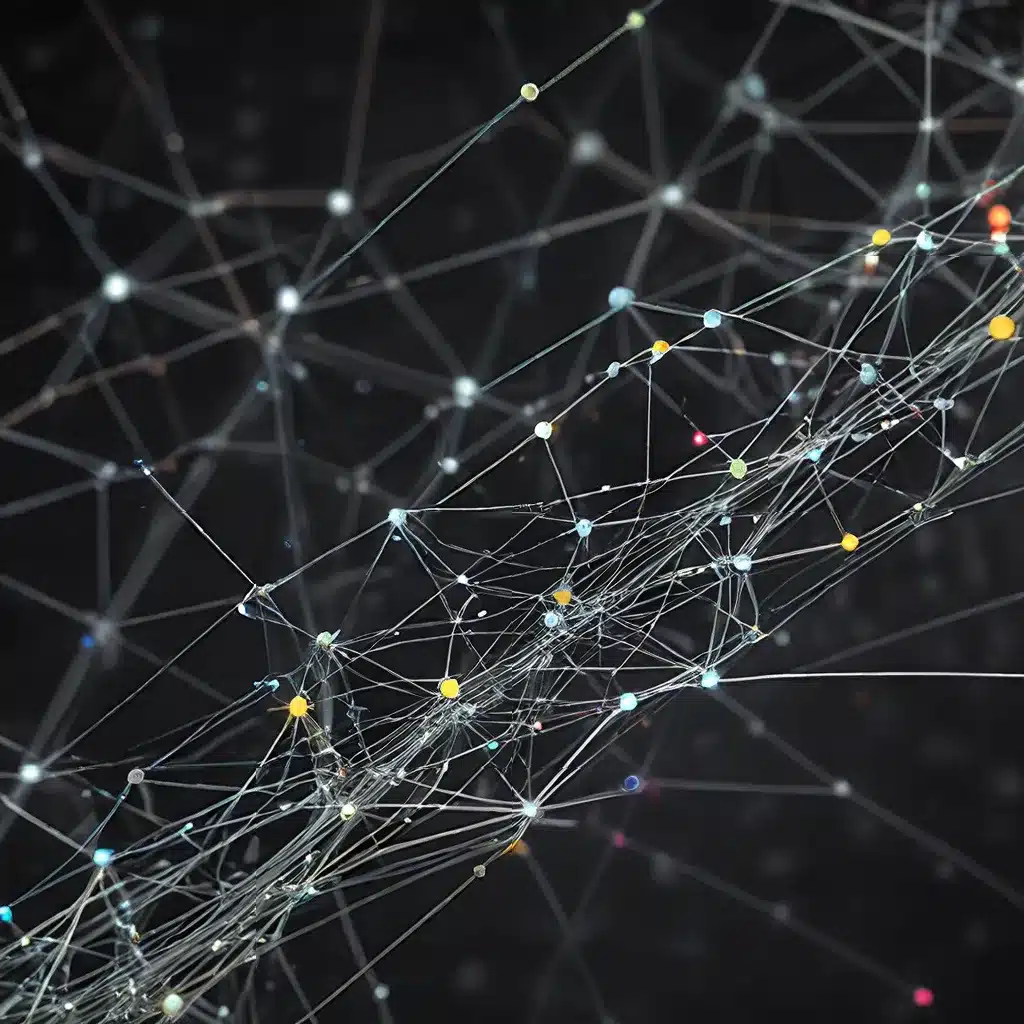
In the rapidly evolving world of sensor networks and the Internet of Things (IoT), the ability to effectively visualize and interpret complex data is paramount. As these technologies become increasingly pervasive, the need to transform raw sensor data into meaningful, actionable insights has become a critical challenge. Sensor Network Visualization offers a powerful solution, empowering users to uncover hidden patterns, optimize system performance, and drive informed decision-making.
Exploring the Power of Sensor Network Visualization
At the heart of sensor network visualization lies the ability to transform large, multidimensional datasets into intuitive, visually compelling representations. By leveraging advanced data visualization techniques, practitioners can quickly identify trends, anomalies, and interdependencies within their sensor networks, enabling them to make data-driven decisions with confidence.
One of the key advantages of sensor network visualization is its capacity to handle the sheer volume and complexity of data generated by modern IoT systems. As the number of connected devices continues to grow, the amount of information to be processed and analyzed can quickly become overwhelming. Visualization tools, however, can cut through the noise, presenting the most relevant and actionable insights in a clear and concise manner.
Sensor networks are not only about the collection of data; they are also about deriving meaningful insights that can drive innovation, improve efficiency, and enhance decision-making. By visually representing the relationships between sensor nodes, data flows, and environmental factors, users can gain a deeper understanding of their system’s dynamics, enabling them to optimize performance, identify potential security vulnerabilities, and proactively address emerging challenges.
Unlocking the Potential of Sensor Network Visualization
One of the key applications of sensor network visualization is the ability to monitor and manage energy consumption. As the demand for energy-efficient and sustainable IoT solutions continues to grow, visualization tools can provide valuable insights into the energy usage patterns of individual sensors, entire networks, and the broader system. By identifying energy-intensive hotspots or areas of inefficiency, users can implement targeted interventions to optimize power management and reduce their environmental footprint.
Another compelling use case for sensor network visualization is fault detection and diagnosis. By visualizing the real-time status and interconnectivity of sensor nodes, operators can quickly identify malfunctioning or underperforming components, enabling them to swiftly address issues and maintain the overall integrity of the network. This enhanced visibility can lead to reduced downtime, improved reliability, and more efficient maintenance strategies.
Moreover, sensor network visualization can play a crucial role in emergency response and disaster management. By integrating sensor data with geospatial information, visualization tools can provide a comprehensive, location-aware understanding of the evolving situation, allowing first responders and decision-makers to allocate resources effectively, coordinate relief efforts, and mitigate the impact of natural or man-made crises.
Advancements in Sensor Network Visualization Techniques
The field of sensor network visualization is continuously evolving, with researchers and practitioners exploring innovative techniques to enhance the way we interpret and leverage sensor data. One such advancement is the use of 3D visualizations, which can provide a more immersive and intuitive understanding of complex sensor networks, especially in the context of spatial and geographical applications.
Another emerging trend in sensor network visualization is the incorporation of machine learning and artificial intelligence. By leveraging these technologies, visualization tools can go beyond simple data representation, identifying patterns, anomalies, and predictive insights that would be difficult for human analysts to discern. This integration of advanced analytics and visualization can lead to more informed decision-making, proactive maintenance, and predictive capabilities.
The rise of augmented reality (AR) and virtual reality (VR) technologies has also opened up new frontiers in sensor network visualization. By overlaying sensor data onto real-world environments or immersive digital simulations, users can gain an unprecedented level of situational awareness and interaction with their sensor networks. This can be particularly valuable in applications such as industrial automation, smart city planning, and environmental monitoring.
Addressing Challenges and Considerations in Sensor Network Visualization
As with any transformative technology, sensor network visualization also faces its share of challenges and considerations. Data security and privacy are of paramount concern, as sensor networks often collect and transmit sensitive information. Visualization tools must be designed with robust security measures, data encryption, and access control mechanisms to protect against unauthorized access and ensure compliance with relevant regulations.
Another critical consideration is the scalability of sensor network visualization solutions. As the number of connected devices and the volume of data continue to grow, the visualization tools must be able to handle increasing complexity and maintain responsive performance, ensuring that users can effectively manage and interpret their sensor networks, regardless of their size or complexity.
Additionally, the interoperability of sensor network visualization platforms is crucial, as sensor networks often comprise a diverse array of devices, protocols, and data formats. Developing standardized, vendor-neutral visualization solutions that can seamlessly integrate with heterogeneous sensor systems is a significant challenge that requires collaboration across the industry.
The Future of Sensor Network Visualization
As the world becomes increasingly interconnected through the proliferation of sensor networks and IoT, the role of visualization in unlocking the full potential of these technologies will only continue to grow. Advances in data science, edge computing, and cloud-based analytics will further empower sensor network visualization, enabling real-time insights, predictive maintenance, and autonomous decision-making.
Moreover, the integration of digital twin technologies, where virtual representations of physical sensor networks are created, will revolutionize the way we design, simulate, and optimize IoT systems. By coupling sensor data with virtual models, users will be able to experiment, test, and refine their sensor networks in a safe, cost-effective, and iterative manner, ultimately leading to more robust and efficient real-world deployments.
In the years to come, sensor network visualization will become an indispensable tool for a wide range of industries, from manufacturing and smart cities to healthcare and environmental monitoring. By transforming raw sensor data into actionable insights, visualization will play a crucial role in driving innovation, improving operational efficiency, and enhancing the overall user experience of sensor-driven technologies.